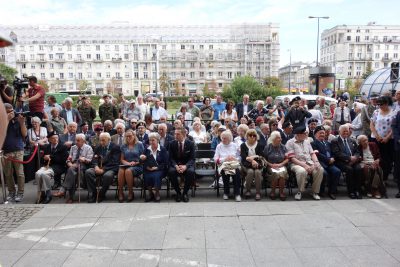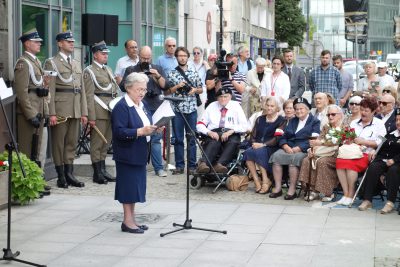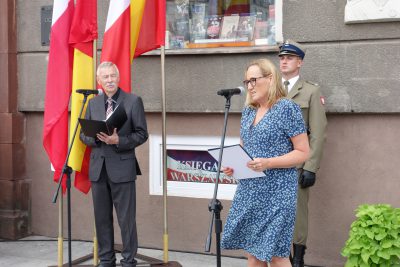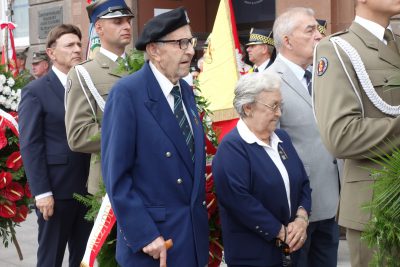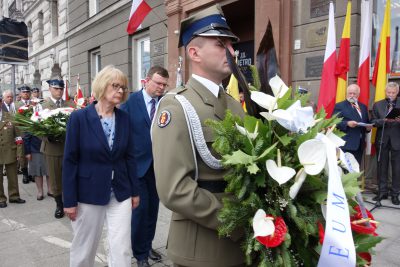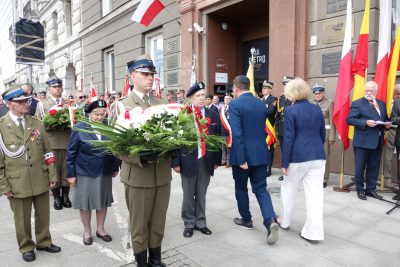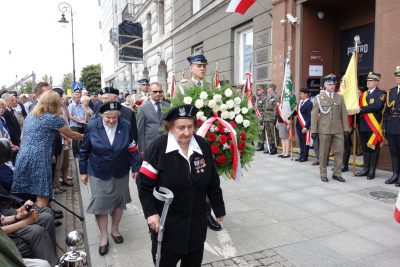To the Glory of the Heroes of Liberty
On 20 August 1944, the insurgents captured the building of the Polish Telephone Joint-stock Company, the so-called PAST, which was Warsaw’s second tallest building. Its capture was not only one of the greatest successes of the insurgents, but also one of the best documented events of the Warsaw Uprising. On 20 August at 1 p.m., in front of the PAST building, which is also the seat of the Warsaw Ghetto Museum, the anniversary celebrations began.
The PAST building standing at 37/39 Zielna Street was of strategic importance for the Germans. The tower of the Polish Telephone Joint-stock Company – the largest telephone exchange in this part of Europe – reared above the surrounding area, which enabled an insight into the insurgents’ positions and made it possible to shell them.
On the night of 19-20 August 1944, the insurgent troops, under the command of Captain Henryk Roycewicz, aka „Leliwa”, attacked the eight-storey PAST building. The insurgents had to set fire to the building before they captured it. A fire-fighting motor pump was used for the assault – with its help a fuel mixture was pumped into the building. Fire raging in the building determined the victory of the Poles. The building remained in Polish hands until the end of the armed uprising.
Stanisław Brzosko, aka „Socha”, from the Home Army’s [AK] „Kiliński” battalion, whose soldiers besieged the building, told about the creation of a flammable mixture – identical as the one that was poured into fire bottles.
Celebrations dedicated to the subsequent anniversaries of the insurgents’ capture of the PAST have been taking place since 2000. „On 9 November 2000, the Prime Minister of the Republic of Poland, Prof. Jerzy Buzek, handed over the symbolic keys to the PAST building to the Foundation of the Polish Underground State, specially appointed by the board of the World Association of Home Army Soldiers [ŚZŻAK]. Our two organisations – ŚZŻAK and the Foundation of the Polish Underground State – are trying, within the framework of their activity, to pass those values on to future generations, which we considered important during our fight,” said Hanna Stadnik, Vice-President of the World Association of Home Army Soldiers.
„The Polish instinct for liberty cannot be killed and will not be killed” said Jan Józef Kasprzyk, Head of the Office for War Veterans and Victims of Oppression, quoting Marshal Józef Piłsudski. The following people also spoke: Ewa Malinowska-Grupińska – Chairwoman of the Council of the Capital City of Warsaw and Paweł Rabiej – Deputy Mayor of the Capital City of Warsaw. Wreaths were laid.
„The Warsaw Uprising, just like the Warsaw Ghetto Uprising a year earlier, gives contemporaries an opportunity to refer to atemporal values – the right to freedom, respect for others, and taking care that future generations live in an independent country,” said Albert Stankowski, Director of the WGM. „Guided by the mission of the Warsaw Ghetto Museum, whose organisation I was entrusted with, I am deeply convinced that the then tragic time, linking the suffering of the Polish and Jewish nations, imposes on us the obligation to remember the participants of the fighting. Among them were also Polish citizens of Jewish descent. I refer with appreciation and respect to the works of the World Association of Home Army Soldiers and the Foundation of the Polish Underground State, related to commemorating the tragic fate of the insurgents, the Home Army, and the capital. 20 August 1944 is an important date for the Warsaw Ghetto Museum,” Albert Stankowski summed up.
Anna Kilian


